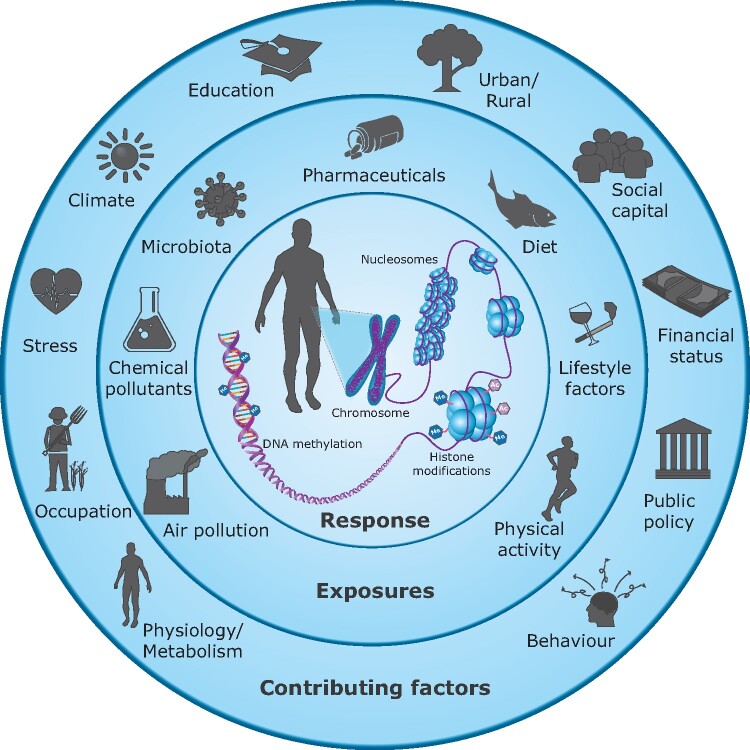Figure 3.
The human exposome. Environmental exposures are major risk factors for human diseases, and only a small proportion of chronic illness can be attributed to genetic factors alone. Systematic information on the human exposome—the lifetime sum of environmental exposures—is therefore important to reduce the overall burden of disease. Humans are continuously exposed to many contaminants and other stressors that can induce adverse effects, independently or when they interact. For example, the consequences of climate change include adverse health effects through heatwaves and increased vector-borne infectious outbreaks and the potential to alter environmental concentrations and biological effects of pollutants. The individual response to current exposures and susceptibility to disease are influenced by genetics, epigenetics, physiology and health status, which involve changes in biological pathways caused by earlier exposures. Epigenetic mechanisms such as DNA methylation, histone modifications and non-coding RNA are important pathways for effects of the exposome. The exposures can alter epigenetic modifications and thereby turn on, or off, genes. Investigating the effects on epigenetic processes by using omics tools can therefore provide evidence of responses to a set of exposures and improve the understanding of human disease

